Hebron Relocation
Le déplacement de Hebron
Holly Andersen
2023
| 15 min
Documentary
Original English version, Inuktitut and French subtitles
Awards and Festivals
Official Selection - Thematic Section: HabiterFestival REGARD 2024
Official Selection Belleville Downtown DocFest, Canada (2024)
Official Selection Available Light Film Festival, Yukon (2024)
Official Selection International Festival of Winter Cinema, Edmonton (2024)
Official Selection Spirit Song Festival, St. John’s (2024)
Official Selection Hot Docs Festival, Canada (2023)
Official SelectionSt. John's International Women's Film Festival (2023)
Official Selection Atlantic International Film Festival (AIFF), Canada (2023)
A National Film Board of Canada Production
Filmmaker Holly Andersen of Makkovik, Nunatsiavut, always knew that the house she lives in carries within its frame the echoes of the forced displacement of northern Labrador Inuit. In Hebron Relocation, Andersen explores what makes a place a home as she speaks with friends and family about how the relocation impacted generations of Labrador Inuit.
Andersen’s house was one of many homes across Labrador hastily built for incoming northern Inuit relocatees. In 1959, residents of the community of Hebron were told that, without question, they would be divided up and relocated to more southerly communities across Labrador. Most families were not prepared for such a drastic change and left everything they knew behind.
Weaving together intimate stories from her community with rare footage that gives us a glimpse of community life during this upheaval, Andersen provides a heartfelt look at a difficult past that has changed the lives of Labrador Inuit forever.
Filmmaker Holly Andersen of Makkovik, Nunatsiavut, always knew that the house she lives in carries within its frame the echoes of the forced displacement of northern Labrador Inuit. In Hebron Relocation, Andersen explores what makes a place a home as she speaks with community members about how the relocation impacted generations of Labrador Inuit.
Located in an area of Makkovik still known as Hebron End, Andersen’s house was one of many homes across Labrador communities that were hastily built for incoming northern Inuit relocatees. The few houses that remain are reminders of how the relocations reshaped not just Makkovik, but many communities in Nunatsiavut. Realizing she did not know the whole story behind the relocations, Andersen felt compelled to learn more about her community’s connection.
In 1959, residents of the northern Labrador Inuit community of Hebron were told that, without question, they would be divided up and relocated to more southerly communities across the region. Community members travelled south by boat for hundreds of kilometres to their new homes, including the community of Makkovik. Most families were not prepared for such a drastic change. They left everything they knew behind, and integrating into new communities was not always easy. Even though these families were relocated generations ago, many still consider themselves to be living far from home.
Growing up, Andersen knew of the relocations, with some of her friends and neighbours being descendants of the relocatees, but she did not realize the extent to which Inuit in Nunatsiavut were still feeling the impacts of their displacement. Through touching conversations with community members, Andersen guides us with care as she learns about their stories of relocation and reflects on what it has meant for their families. By weaving together intimate stories from her community with rare footage that gives us a glimpse of community life during this upheaval, Andersen provides a heartfelt look at a difficult past that has changed the lives of Labrador Inuit forever.
ONE-LINER
In Hebron Relocation, Holly Andersen explores what makes a place a home as she learns more about her community’s connection to generations of displaced northern Labrador Inuit.
A WORD FROM THE DIRECTOR, HOLLY ANDERSEN
As a photographer living in Makkovik, Labrador, I am surrounded by beautiful landscapes, people and stories all year round. It’s easy to see or hear something fascinating in this singular place. My interest in photography started in my teens and by my thirties I was doing it professionally, but my foray into filmmaking is recent. This move toward film was inspired by my love of learning, especially about my community, and especially about the Hebron relocation.
Growing up in Makkovik, the echoes of the Hebron relocation surrounded me daily. Until I made this film, I didn’t know the true extent of the tragedy. As I started learning, I wanted to share the story in a fresh way for younger generations, and to reiterate the necessity of remembering what happened.
Making this film was an extraordinary experience. I am looking forward to audiences journeying with me, learning as I learned, and to welcoming them into a space of respect for Labrador history. Hearing firsthand from Elder Gus Semigak was an experience I feel extremely grateful for. To listen to him talk about his homeland, how much he misses it, and how much love he has for it, makes it hard to understand why government and health authorities thought this relocation was “the right thing to do.”
As I was making this film, I found resources to help me learn more. One of them was the book Dispossessed by Carol Brice-Bennett. She had conducted many interviews with many relocatees, as well as some members of the community. It was a great inside look into how the decision was made and carried out, and how the Hebron Inuit felt about it. They didn’t just lose their home; they lost some of their culture and language as well.
Ultimately, my hope for this film is to educate and inform people that the Hebron relocation happened, and even though it occurred 64 years ago, the pain and heartache of the relocation is still felt today.
ABOUT THE LAB DOC PROJECT
The Labrador Documentary Project (Lab Doc Project) supports Indigenous storytelling by working with first-time Labrador Inuit filmmakers to create and distribute Inuit stories from Inuit perspectives. The Lab Doc Project is led by Inuit through community collaboration, and focuses on topics selected by the filmmakers through a process of reflection and community engagement. This initiative aims to elevate Indigenous storytelling in Newfoundland and Labrador, create film opportunities for Inuit, and proactively diversify our industry. There are four films in this Project, with two launching in 2021, and the remaining films launching in 2023.
Poster
Contact NFB publicist for high-resolution poster for print.
Excerpts
Still healing from the trauma
Contact NFB Publicist for broadcast–quality clips.
Images
Loading...
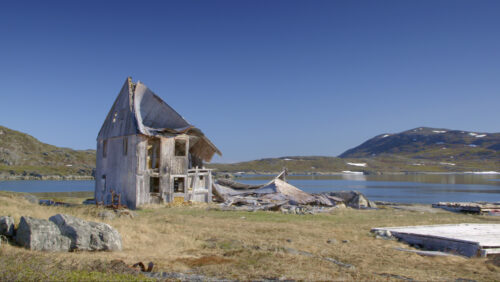
Download
Loading...
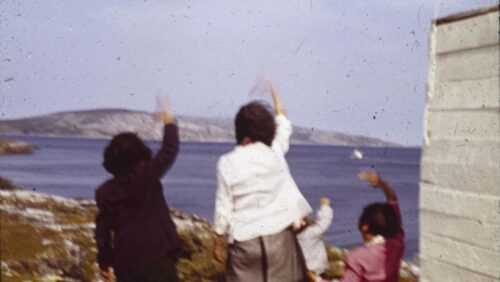
Download
Loading...
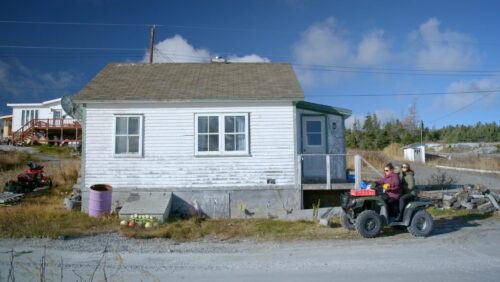
Download
Loading...
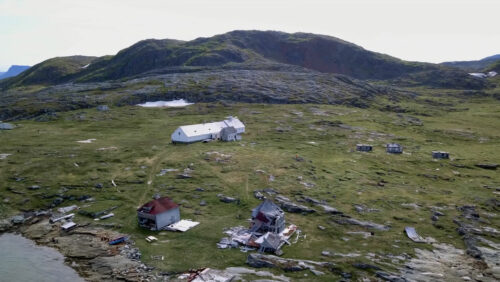
Download
Loading...

Download
Loading...
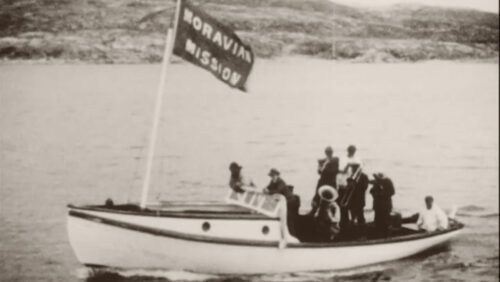
Download
Loading...
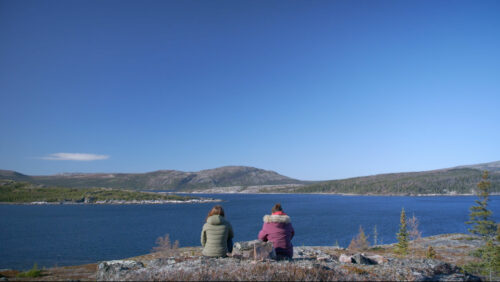
Download
Loading...
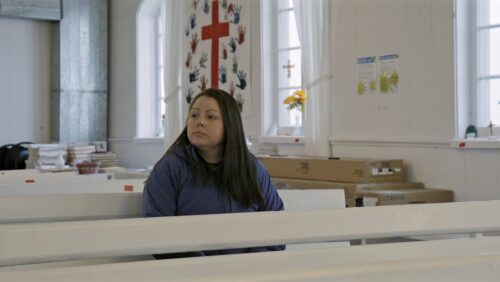
Download
Loading...

Download
Contact NFB publicist for high-resolution images for print.
Team
Holly Andersen
Director
Photo
Photo : Courtesy
Latonia Hartery
Producer
Photo
Photo : Glen Whiffen
Kat Baulu
Producer
Photo
Rohan Fernando
Producer and Executive Producer
Photo
Photo : ©2021 Meghan Tansey Whitton
Annette Clarke
Executive Producer
Photo
Photo : Dave Howells
Credits
Written and Directed by
Holly Andersen
Featuring
The Communities of Makkovik and Hopedale, Nunatsiavut
Director of Photography
Nigel Markham
Editor
Justin Simms
Sound Editor
Paul Steffler
Original Music by
Duane Andrews
Narration by
Holly Andersen
Production Manager
Jessica Winters
Production Assistant
Danielle Pottle
Interview Collaborators
Jessica Winters
Janine Lightfoot
Gustav Semigak
Elders Speaking in Archives (In Order of Appearance)
Peter Imak
Sabina Nochasak
Verona Ittulak
Sound Recordist
Michelle Lacour
Director of Photography (Trainee)
Holly Andersen
Drone Footage
Bird’s Eye Incorporated
Mentors
Courtney Montour
Alanis Obomsawin
Nigel Markham
Cultural Consultants
Joan Andersen
Heather Igloliorte
Researcher
Holly Andersen
Inuktitut Translation
Katie Winters
Inuktitut Language Advisor
Solomon Semigak
Additional Music
“God Be With You”
(Ingitaujuk)
(Benedictory Hymn)
Music Composed by
William G. Tomer
Performed by
Duane Andrews
Archives Courtesy of
Joseph Townley Collection, Labrador Campus, Memorial University
James Robert Andersen Collection, Nunatsiavut Government
Hettasch Family Collection, Labrador Campus, Memorial University
Hettasch Labrador in the 60s, Labrador Campus, Memorial University
Forever in Our Hearts, Okâlakatiget Society
Richard Finnie Estate
Library and Archives Canada
National Film Board of Canada
Hannie Hettasch Fitzgerald
Nigel Markham
Janine Lightfoot
Tom Gordon
With gratitude to the Communities of Makkovik and Hopedale, Labrador who made this film possible and:
Joan Andersen
Gemma Pottle
Barry Andersen
Nellie Winters
Hotel Makkovik
Amaguk Hotel
David Igloliorte
Dawn Winters
John Lucy
Carol Gear
Arlene Ikkusek
Sarah Abel
Lena Onalik
Belinda Webb
Okâlakatiget Society
Government of Nunatsiavut
Thank You
Jessica Winters
Janine Lightfoot
Clara Ford
Gustav Semigak
TJ Lightfoot
Carol Brice-Bennet
Hannie Hettasch Fitzgerald
Mark Turner
Chelsee Arbour
Morgen Mills
Tom Gordon
Aaron Elliott
PAL Airlines
Selma Slade
Michelle Van Beusekom
Kelly Davis
Glenn Gear
Heather Campbell
Ossie Michelin
Jennie Williams
A Special Thanks To
Tony Andersen
Mary B. Andersen
Megan Andersen
Gary Andersen
Marilyn Faulkner
Carabeth Faulkner
Genevieve Faulkner
Tyler Evans
Leah Evans
Production Supervisor
Roz Power
Technical Coordinators
Daniel Lord
Christopher MacIntosh
Colourist and On-line Editor
Steve Cook
Re-Recording Mixer
Harvey Hyslop
Foley and Narration Engineer
Matthew Thomson
Foley Artist
Hilary Thomson
Assistant Editor
Aaron Elliott
Production Coordinator
Yanis Ait Mohamed
Senior Production Coordinators
Cheryl Murgatroyd
Anna MacLean
Sarah MacLeod
Studio Administrator
Leslie Anne Poyntz
Marketing Manager
Jamie Hammond
Marketing Coordinator
Julie Fortin
Publicist
Osas Eweka-Smith
Legal Counsel
Peter Kallianiotis
Dominique Aubry
Associate Producer (In Development)
Stephen Agluvak Puskas
Production Assistant (In Development)
Marian Rebeiro
Associate Producer
Jayde Tynes
Producers
Latonia Hartery
Kat Baulu
Rohan Fernando
Executive Producers, Quebec and Atlantic Studio
Annette Clarke
Rohan Fernando
Developed with the participation of the NLFDC and LJH Films
Part of the LABRADOR DOC PROJECT shorts series
© 2023 A National Film Board of Canada production
Media Relations
-
About the NFB
The NFB is Canada’s public producer and distributor of award-winning documentaries, auteur animation, interactive stories, and participatory experiences. Since 1968, the NFB has produced over 300 works by First Nations, Métis and Inuit filmmakers—an unparalleled collection that pushes past dominant narratives and provides Indigenous perspectives to Canadian and global audiences. The NFB is implementing an action plan with commitments that include devoting a minimum of 15 percent of overall production spending to Indigenous-led productions and making these works more accessible via Indigenous Cinema, a destination on NFB.ca.